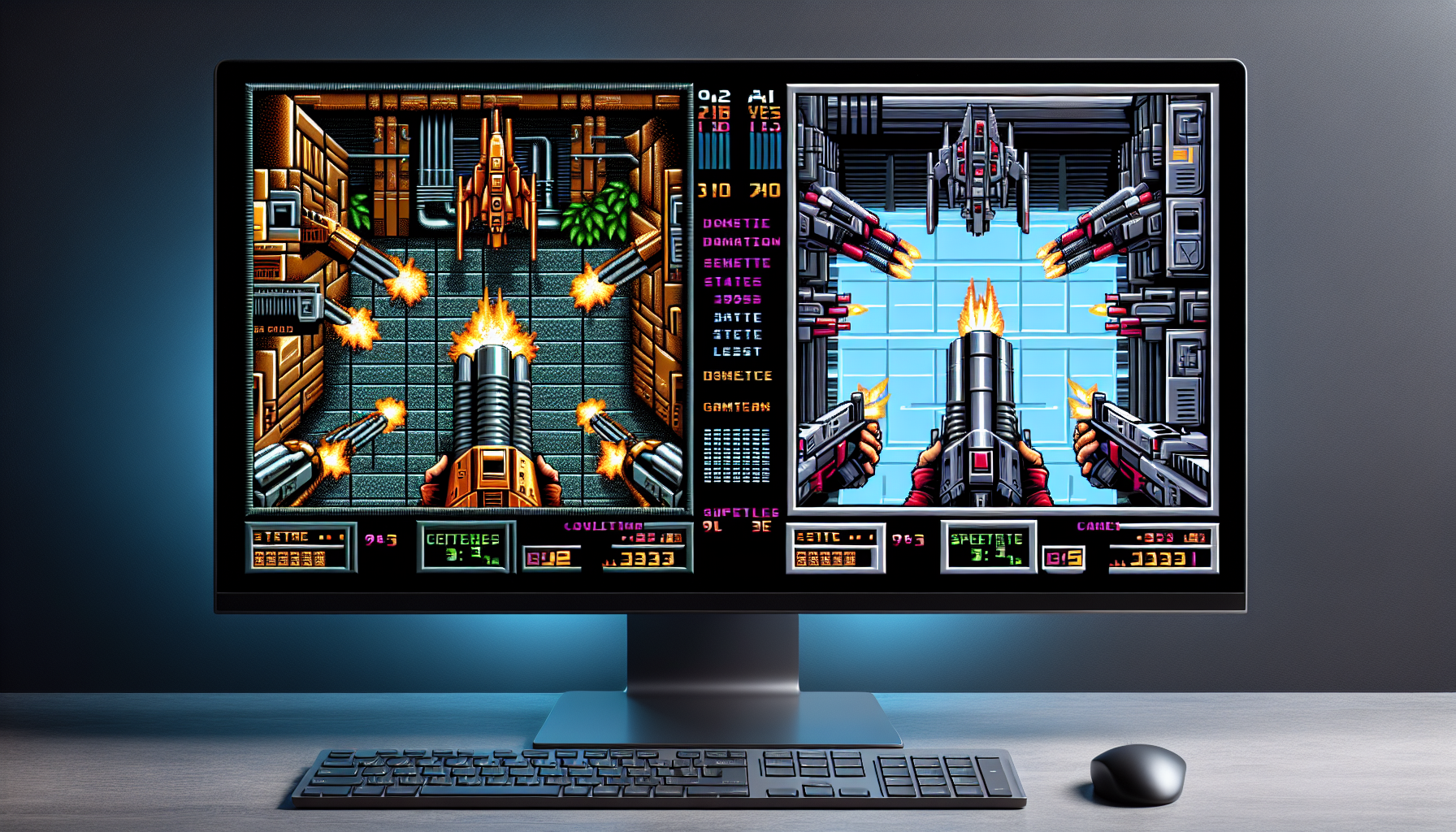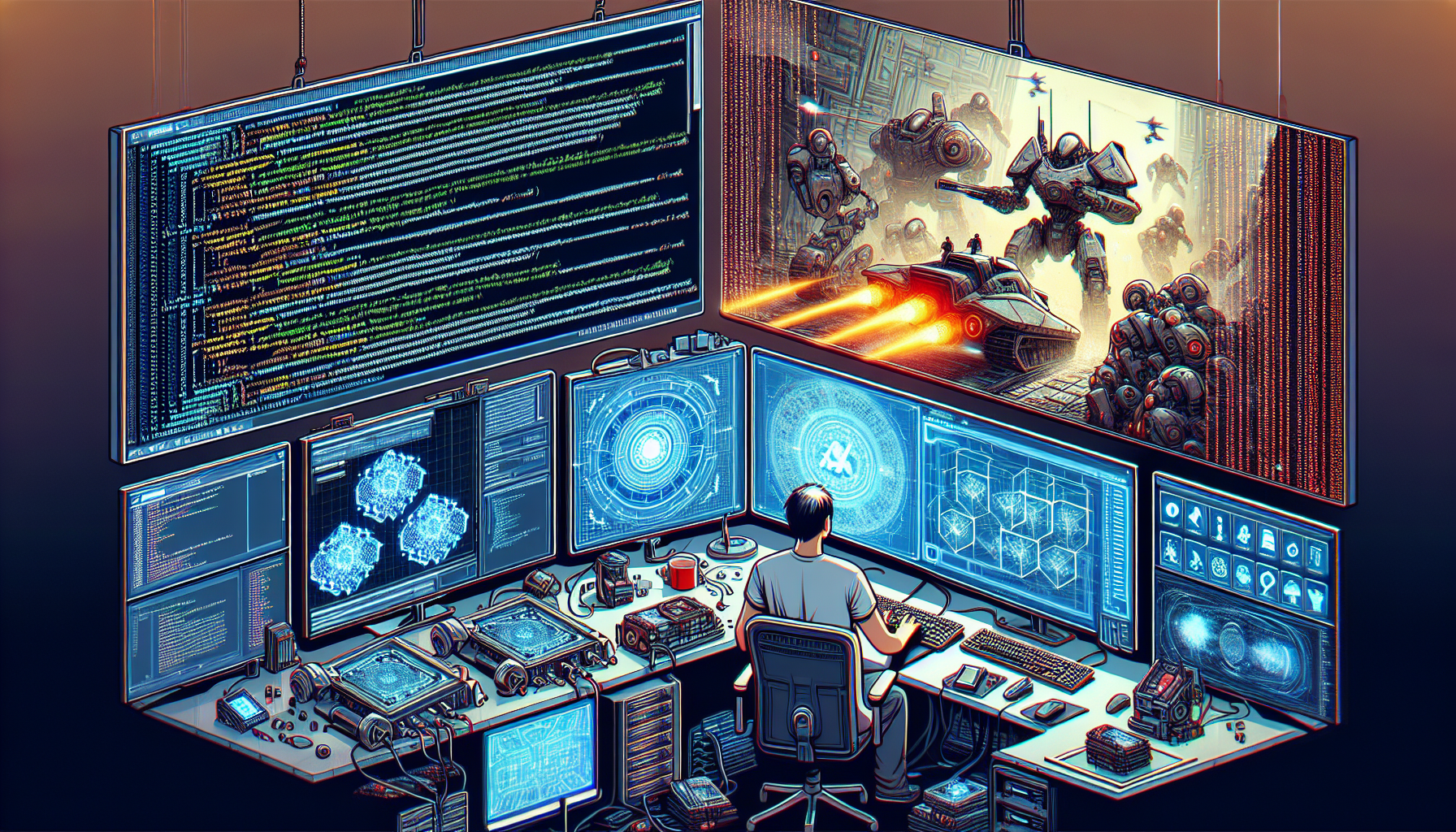Microsoft's Muse AI: Revolutionizing Game Development with AI-Generated Quake II Demo
The gaming industry is witnessing a significant transformation as artificial intelligence continues to push the boundaries of what's possible in game development. Microsoft has recently unveiled its Muse AI model through an intriguing tech demo: an AI-generated version of the classic first-person shooter Quake II. This development marks a fascinating intersection of gaming nostalgia and cutting-edge AI technology that could reshape how games are created in the future.

Understanding Microsoft's Muse AI Model
Microsoft's Muse AI represents a significant advancement in generative AI technology specifically tailored for game development. Unlike previous AI applications in gaming that focused primarily on NPC behavior or procedural content generation, Muse takes a more comprehensive approach by generating actual gameplay elements.
The model appears to be part of Microsoft's broader AI strategy, which the company has been aggressively pursuing across its product lines. By choosing Quake II as its demonstration platform, Microsoft leverages a well-known gaming classic that many developers and players are familiar with, making it easier to evaluate the AI's capabilities against a known baseline.
According to the limited information available, Muse works by analyzing game mechanics, visual styles, and player interactions to generate content that maintains the feel of the original game while introducing AI-created elements. This represents a significant technical achievement, as games involve complex interactive systems that must maintain logical consistency across multiple dimensions (physics, visuals, gameplay rules).
The Technical Implementation: How AI-Generated Quake II Works
While specific technical details are still emerging, the AI-generated Quake II demo likely involves several sophisticated AI approaches working in concert:
- Visual asset generation: Using techniques similar to those in image generation models to create textures, models, and visual effects that align with the Quake II aesthetic
- Environmental design: Procedurally generating level layouts that maintain playability while offering new experiences
- Gameplay logic: Preserving the core shooting mechanics while potentially introducing variations in enemy behavior, weapon functionality, or player movement
- Performance optimization: Ensuring the generated content runs efficiently on modern hardware despite being created by AI
What makes this particularly impressive is the real-time interactive nature of games. Unlike static content generation (such as images or text), games must respond dynamically to player input while maintaining consistent rules and performance parameters. Microsoft's ability to create an AI model capable of generating interactive content represents a significant leap forward in generative AI capabilities.
The Broader Implications for Game Development
This development raises fascinating questions about the future of game development. If AI can generate playable game content based on existing titles, we might see several industry shifts:
Accelerated prototyping: Game developers could use AI models like Muse to rapidly prototype new ideas or variations on existing gameplay concepts, potentially shortening development cycles.
Democratization of game creation: Smaller studios or individual developers might leverage AI tools to create content that would traditionally require larger teams, potentially fostering more innovation in the indie space.
Content expansion: Existing games could be extended with AI-generated levels, missions, or modifications, creating effectively endless content for popular titles.
New creative partnerships: We might see new collaborative approaches where human designers work alongside AI systems, with humans providing creative direction and AI handling implementation details.
However, this also raises concerns about potential displacement of certain roles in game development, particularly in areas like level design, texture creation, and other content generation tasks that might be partially automated by these new AI capabilities.
Microsoft's AI Gaming Strategy
The Muse AI and Quake II demo appear to be part of Microsoft's broader "Xbox AI era" strategy. With its substantial investments in OpenAI and the integration of AI features across its product portfolio, Microsoft is positioning itself at the forefront of AI-powered gaming.
This move aligns with other Microsoft gaming initiatives, including the expansion of Game Pass, cloud gaming services, and the acquisition of major studios like Bethesda and Activision Blizzard. By developing AI tools for game creation, Microsoft could potentially enhance its first-party development capabilities while also creating new tools that could be licensed to third-party developers.
The timing is particularly interesting given the current generation of console hardware is reaching its mid-lifecycle point. AI-enhanced game development could potentially extend the useful life of existing hardware by enabling more efficient creation of content or by using AI to optimize game performance.
Industry Context: AI's Expanding Role in Gaming
Microsoft's Muse AI is entering a landscape where AI is already transforming various aspects of gaming:
- NVIDIA's DLSS and AMD's FSR technologies use AI to upscale lower-resolution renders, improving performance without sacrificing visual quality
- Procedural generation techniques have evolved to incorporate machine learning for more sophisticated and varied content creation
- NPC behavior systems increasingly use AI to create more realistic and adaptive character interactions
- Tools like Unity's Sentis and Unreal Engine's AI integrations are bringing machine learning capabilities directly into game engines
What distinguishes Muse appears to be its comprehensive approach to game generation, potentially handling multiple aspects of game creation simultaneously rather than focusing on a single element like visual enhancement or character behavior.

Challenges and Limitations
Despite the impressive nature of this technological demonstration, several challenges and limitations are likely present:
Creative boundaries: While AI can generate content based on existing patterns, truly innovative game design still requires human creativity to break conventions and establish new paradigms.
Technical constraints: Game development involves numerous technical considerations around performance, platform compatibility, and user experience that may be difficult for current AI systems to fully optimize.
Legal and ethical questions: Using AI to generate content based on existing games raises questions about intellectual property, particularly if the training data includes copyrighted materials.
Quality consistency: AI-generated content may vary significantly in quality, potentially requiring substantial human curation and refinement.
The current demo is likely a carefully curated showcase of the technology's capabilities rather than a fully autonomous game creation system. The path from tech demo to production-ready tool will involve addressing these challenges.
What This Means for Development Teams and Binbash Consulting Clients
For organizations involved in software development, including Binbash Consulting's clients, Microsoft's AI-generated Quake II demo offers valuable insights into the future of software creation:
Infrastructure scaling considerations: AI-generated applications may have different infrastructure requirements compared to traditionally developed software. Organizations should prepare their cloud and infrastructure strategies accordingly.
DevOps evolution: As AI becomes more involved in code and content generation, DevOps practices will need to evolve to incorporate AI-assisted development workflows, testing procedures, and deployment patterns.
Skill development opportunities: Development teams should consider how to complement their existing skills with AI expertise, focusing on becoming effective collaborators with AI systems rather than competing with them.
Ethical and governance frameworks: Organizations should begin establishing ethical guidelines and governance frameworks for AI usage in their development processes.
At Binbash Consulting, we're closely monitoring these developments to ensure our clients are well-positioned to leverage AI advancements in their infrastructure and development practices. The convergence of gaming technology and AI is particularly relevant as games often push the boundaries of what's possible with current technology before these innovations spread to other sectors.
Conclusion: A Glimpse into the Future of Software Creation
Microsoft's AI-generated Quake II demo using the Muse AI model represents more than just an interesting gaming experiment—it offers a glimpse into how AI could transform software development broadly. By demonstrating that AI can generate interactive, real-time experiences that maintain the essence of existing software while creating new variations, Microsoft is showcasing possibilities that extend well beyond gaming.
For organizations across industries, this development suggests a future where AI becomes an increasingly capable partner in the creation process. The most successful teams will likely be those that effectively integrate human creativity and expertise with AI's ability to handle repetitive tasks and generate variations at scale.
As these technologies mature, Binbash Consulting remains committed to helping our clients navigate the evolving landscape of AI-enhanced development, ensuring they can harness these powerful tools while maintaining the security, efficiency, and reliability of their infrastructure and applications.

